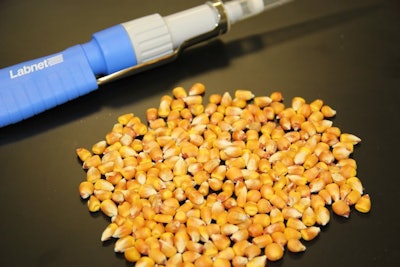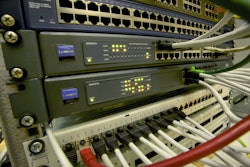
Corn research and development is continually evolving in a complex, fast-paced and challenging environment. Corn breeders are using a broad range of techniques ranging from time-honored traditional plant breeding practices amplified by powerful tools such as biostatistical analysis to developing new approaches such as external applications of genetic materials for weed, insect and virus control.
Tom Koch, vice president of research for AgReliant Genetics gave attendees at the 119th annual convention of the National Grain and Feed Association a feel for the challenges and opportunities facing the seed industry.
Seed corn is produced globally. “There is world-wide diversity that we are tapping into now more than ever,” Koch says. “A lot of this diversity is getting locked up, as countries view their germ plasm as a national treasure.
“Where we do have access to use germ plasm, it’s bringing some very interesting and unique flavor to the U.S. market.”
他说,新的分子分析技术s, there will be more of a smorgasbord of hybrids for companies to offer.
Koch says his company, whose U.S. corn brands include AgriGold and LG Seeds, uses one of the most advanced and efficient forms of double haploid (DH) breeding technology to make new varieties ready for market much faster. “In three generations, this creates an instant homozygous line; traditionally, it has taken size or seven generations to get a true breeding line.”
GMO regulations have made corn breeding more complicated. Koch explained that many countries that don’t allow GM production by their farmers may allow production of GM seed, as long as it’s exported.
He cites Chile, as an example, where an AgReliant production facility is 30 miles south of Peru, where GMOs are forbidden. “We have to be very cautious about how we manage GM production,” he says.
Koch sees little change on the horizon regarding regional acceptance of current GM crops, notably Europe.
“But I think we are about ready to move past this current era and move into the next biotech sector, where we are not necessarily inserting genes into the plants,” he says.
These new practices include putting genetic materials – referred to as biological or biopesticides – into the crop protectant spray. “The biological is applied outside of the plant. They don’t have to modify the plant itself. This has been done with seed treatments; now researchers are looking at doing it more on plants.”
From a plant breeder’s standpoint, Koch says this is exciting. “Working with a spray instead of the plant itself puts the plant breeder back in control of the genetics, instead of the biotechnician.”
He says of the 300,000 genes plant breeders manage, just 8 genes control the herbicide resistance. Without dealing with them, and the extensive regulatory cost and time they demand, more attention can go to overall improved genetics.
These sprays and biological seed treatments will be a very heavy area of research, he says. Regulatory challenges will be part of the puzzle, as to determining what specifically constitutes genetically modified in these types of scenarios.
Koch also shared his enthusiasm for the potential of airborne drones. With them, he sees the ability to quickly and accurately analyze virtually every plant in a test plot for a wide range of agronomic variables, once the current questions by the Federal Aviation Agency regarding the commercial application of drones are resolved.
And, he says practices such as indirect selection accuracy and multi-trait genomic selection allows much faster and more accurate analysis of new lines of hybrids. Speed is valuable, considering that each new generation of a corn line is expected to deliver an increase in yield.
“Basically we’re trying to get more, test more, test it better, get new genetics and get better homogenous lines while decreasing the cycle length using many different techniques,” he says.















